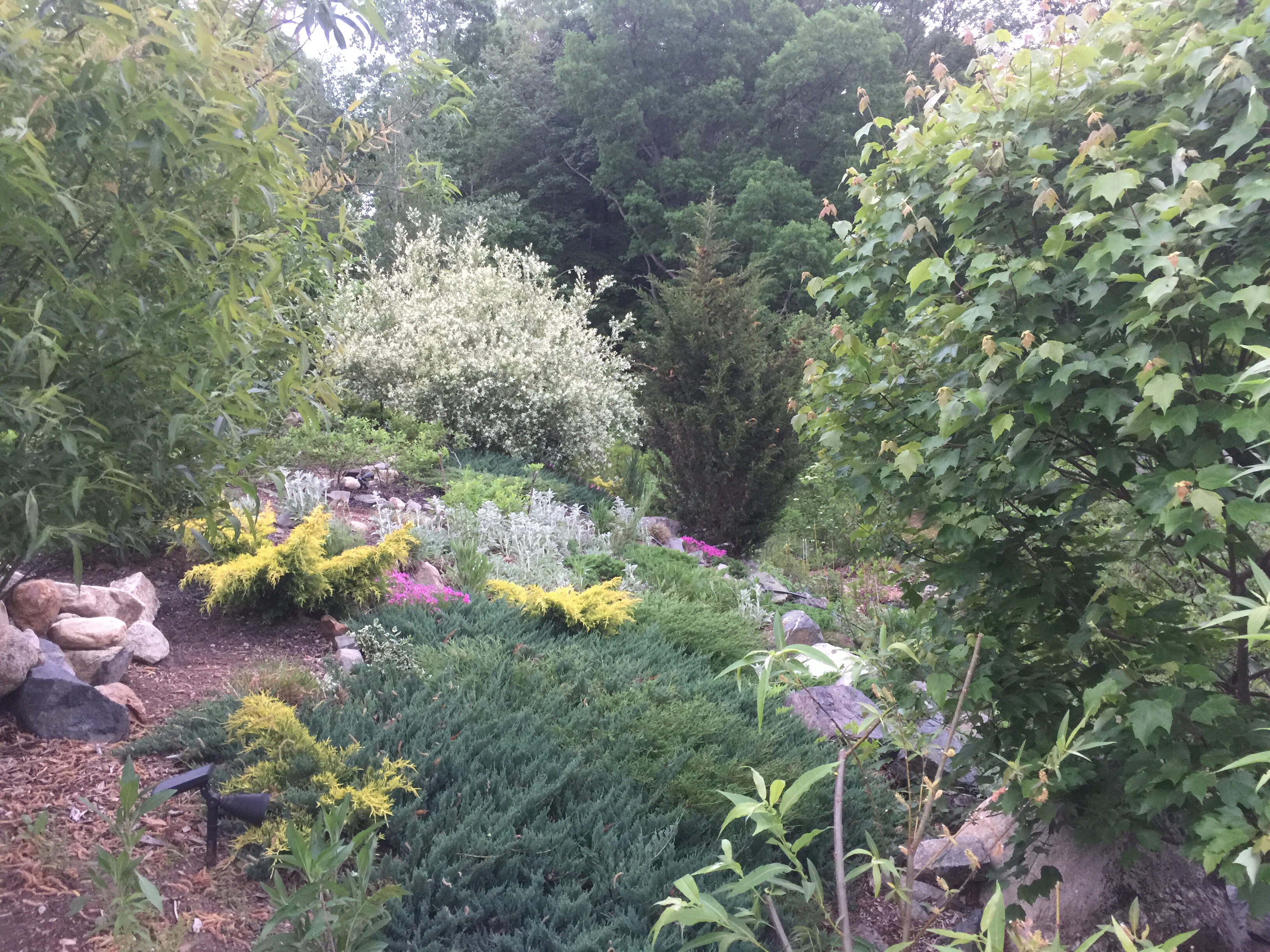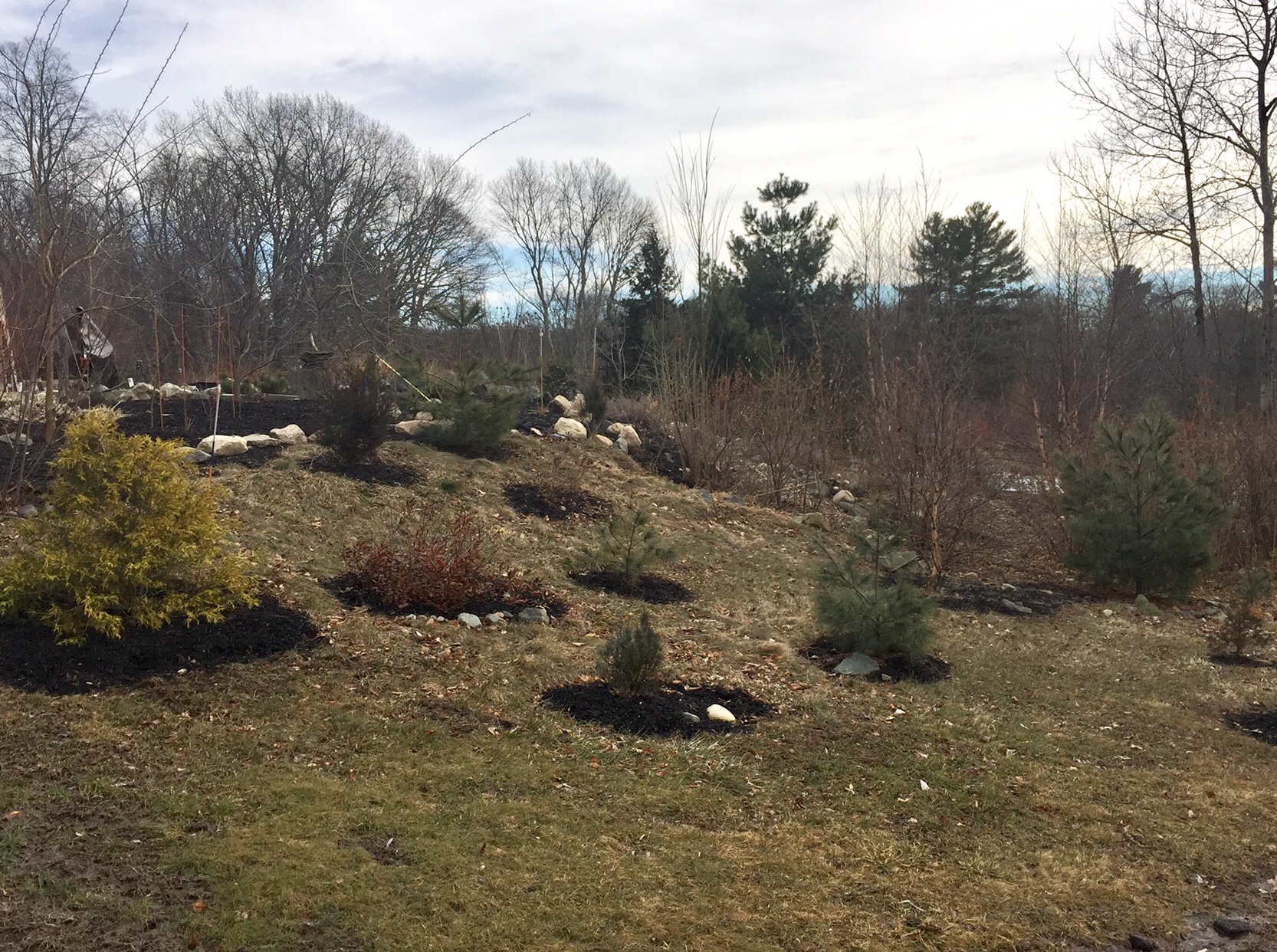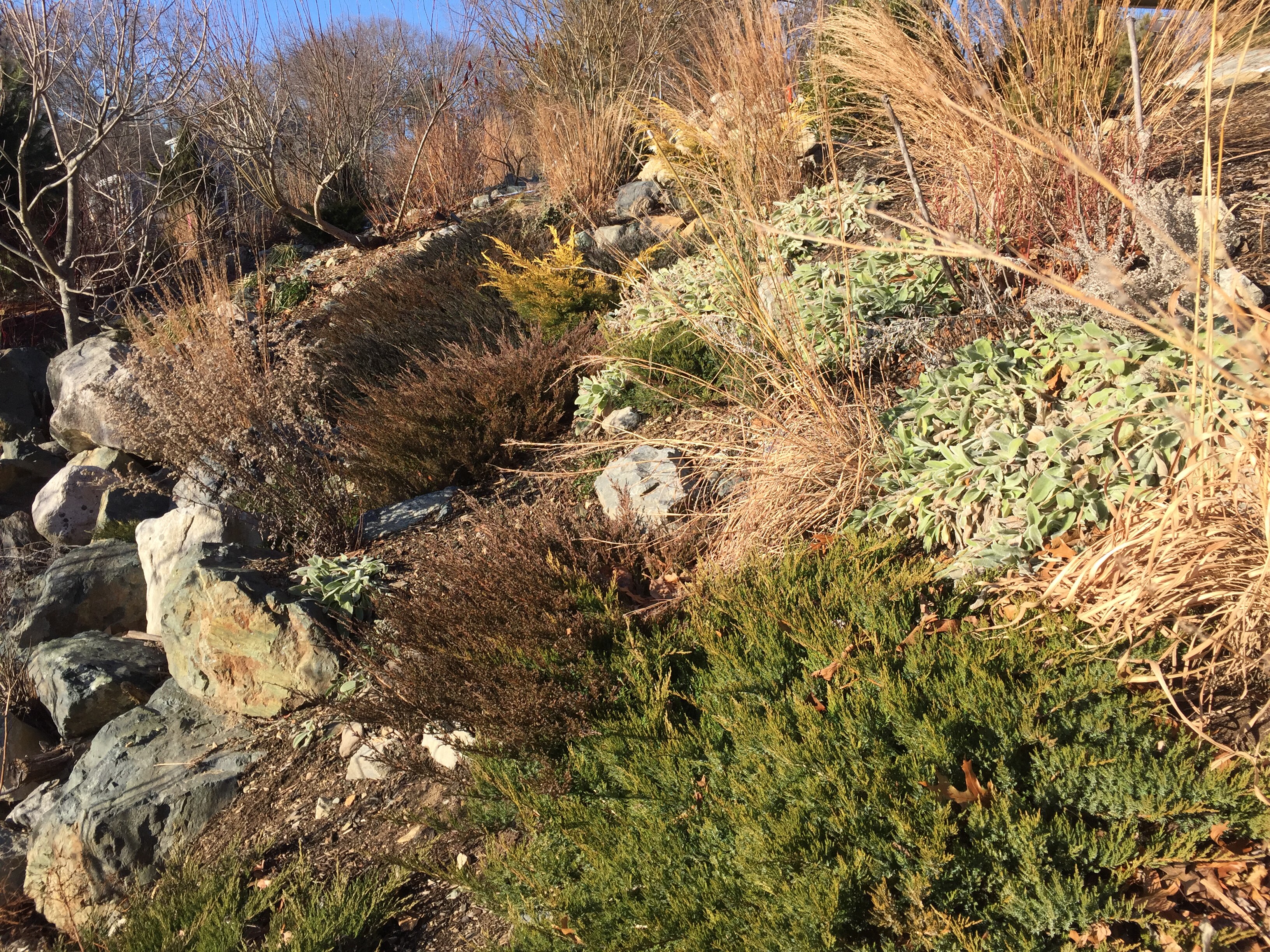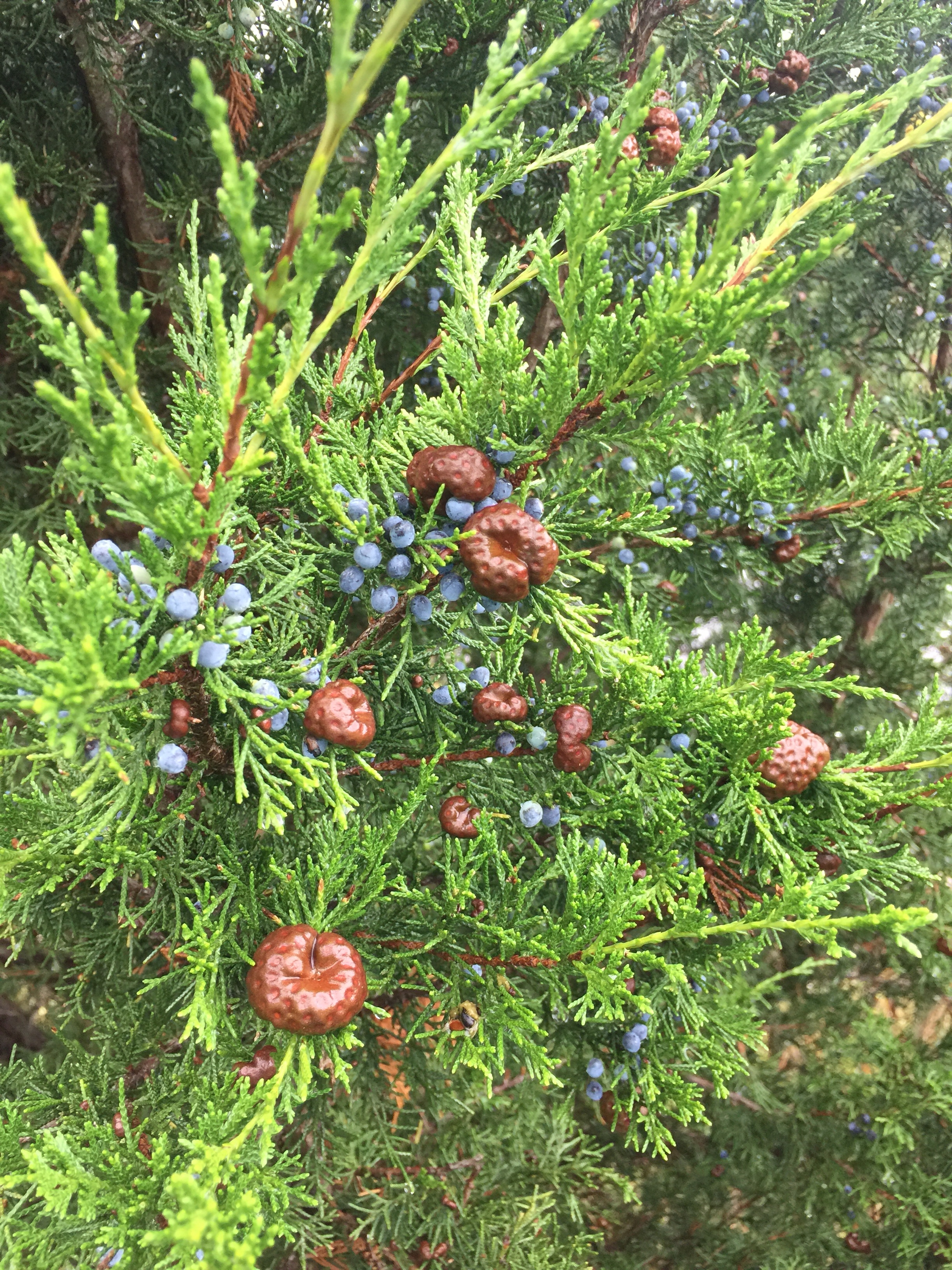It’s just unbelievable that this area was once the thickest area of the densest, deepest and most monstrous Japanese knotweed rhizomes I’ve ever seen, over 8′ tall. You could not walk through it or see through it.
Now, it’s planted with a grove of Betula nigra (river birch) and one Ulmus americana (Princeton elm). The cedar, juniper and pines in the background are very happy also. Walker’s Low catmint loves the sunny slope. My favorite, though, is the Asclepias syriaca (common milkweed), in the foreground. Years ago, I scattered seed in this area, and it’s still coming up.
I don’t think of common milkweed as a weed at all. It’s beautiful, it has great architecture and its scent is heavenly. It does great things for insects (hence birds also) and butterflies. Last year when we had a resident groundhog family, the young shoots were their favorite food. Once we had milkweed coming up, the groundhogs left our salvias alone!







